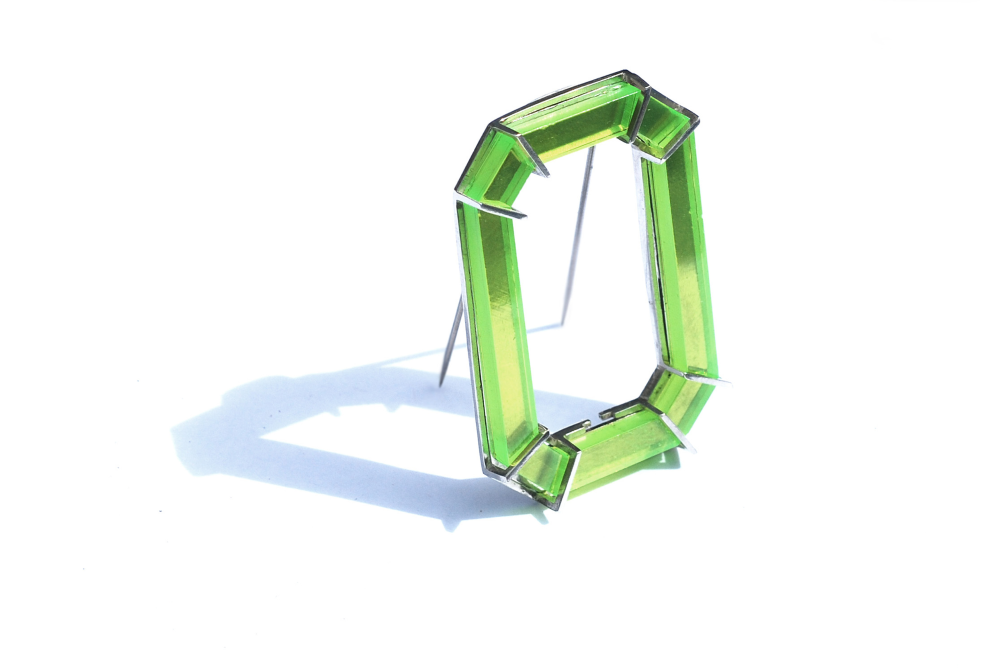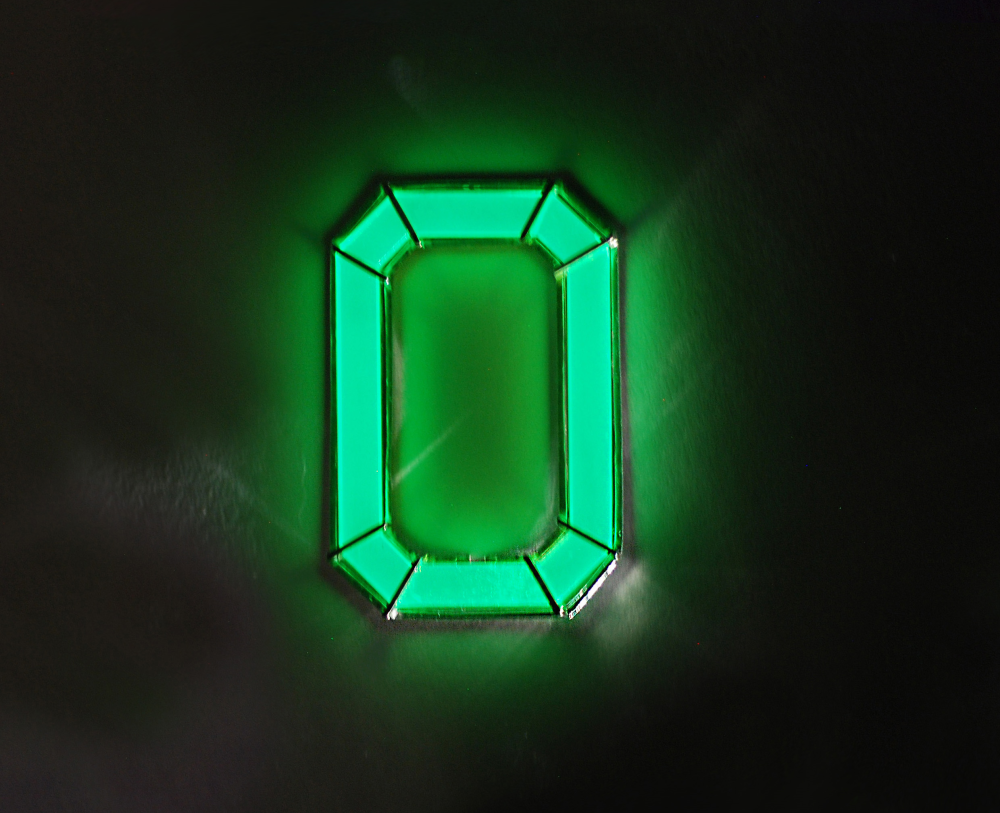Does it get any more Indiana Jones than a jewel that can glow? Such a piece of jewelry has been made possible thanks to jeweler-turned-scientist Sofie Boons of the University of the West of England (UWE).
The ground-breaking gemstone is the world’s first single stone lab-grown crystal that can glow in the dark. It was created as part of a years-long deep dive by the award-winning jewelry designer into the viability, limitations, and possible uses of experimentally grown crystals in contemporary jewelry. Her investigations also saw the creation of the first ruby ever to be grown from a “ruby seed” in a platinum ring, made from industry waste products.
The glowing crystal was created in collaboration with Swiss company BREVALOR Sarl, using their new material “BRG” to craft the single stone. Not only does it glow in the dark, but it also boasts brilliant coloration in the daytime.
The BRG crystals are created in a way that’s similar to the production of silicon crystals, something you’re likely quite close to right now. Silicon became a key material in the information technology age, kicking off with the invention of the transistor in the 1950s and now sitting in our computers and phones. And it seems the crystal age just got a bit flashier, as now we can add glow-in-the-dark BRG to the mix.

The glow-in-the-dark crystal by day.
Image courtesy of Sofie Boons
If, like us, you’re wondering how on Earth such a thing is possible, we caught up with Boons to find out.
How does the gemstone glow in the dark?
SB: The glowing effects of BRG are due to the Eu²+ ions introduced into the crystal matrix and two so-called traps related to Dy³+ and Nd³+, which allow them to store the light for a period of time. The exact nature of the traps is still the subject of ongoing investigations and optimisation efforts.
Phosphorescent materials we encounter in daily life are usually based on pigments embedded in plastics, lacquers, paints, or other support materials. The phosphorescence occurs at the surface of these non-transparent substances. With these new single crystals, new design effects based on three-dimensional transparent volumes can be used. This paves the way to introducing a new functionality in gemstones and gem-like ornamental objects, by enabling the use of an internal light source that needs only a brief activation by daylight.

The glow-in-the-dark crystal by night.
Image courtesy of Sofie Boons
After activation, the energy absorbed will lift the atoms of the material into an excited and unstable state. In an attempt to return to an unexcited state, the material undergoes a transition and will re-emit light for a period of time. This period of time, also referred to as the luminescence efficiency, depends on the degree of transformation of excitation energy into light, which can be adjusted by fabrication parameters, something BREVALOR continues to perfect.
As a designer it has been fascinating to consider the creation of jewellery pieces that have an identity in the light and in the dark.
Sofie Boons
Have the pieces been worn?
SB: Yes, the pieces have been worn, visibility of activated designs in the dark can currently last for 24 hours or more, with an intensity that slowly de-creases over time. As a designer it has been fascinating to consider the creation of jewellery pieces that have an identity in the light and in the dark and explore new effects.
I refer to it as sculpting with light, such as using the material to light its environment – often the body (octagon brooch), create patterns that explore the pooling light phenomenon in the pieces (earrings and pendant), and exploring the creation of BRG cameo’s where the light travels through another material for effect (cameo brooch). When wearing the pieces the green coloured light and the way it is transformed in the designs are mesmerising to me as maker and wearer.
What’s next for your work?
SB: Earlier studies have identified that art and technology can influence each other, not standing in opposition, but inspiring each other. There is some catching up to be done when it comes to the technology of crystal growth and enabling artistic influence on it.
My research only marks the beginning of an exciting journey in which lab-grown crystals are used to innovate within a jewellery and wider creative context.
Sofie Boons
My research only marks the beginning of an exciting journey in which lab-grown crystals are used to innovate within a jewellery and wider creative context. Funding has been secured through a Vice-Chancellor’s Early Career Researcher (VC ECR) Development Award at UWE, which will expand my explorations and collaborations.
Ultimately, it is my goal to launch an artistic crystal growth hub where crystal growers and artists collaborate, to work on more sustainable and innovative crystal materials, for the creation of pigments, glazes, enamels (all small crystals), and of course gemstones.
Interested in seeing the outcomes of Boons’ research in lab-grown gemstones? They will be on exhibition in the Bower Ashton Campus at UWE from November 28 until December 3. For more details click here.
Source Link: This Glow-In-The-Dark Crystal Is A Dazzling World-First